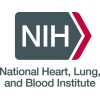
Pain Free Laceration Repairs Using Intra-nasal Ketamine
LacerationLacerations are one of most common trauma in children presenting to the emergency department (ED). Currently, there are wide variations regarding sedation and analgesia practices when suture are required. Even though topical anesthesia is very useful to reduce pain, it does not obviate the use of pharmacologic agents to decrease stress in anxious children undergoing laceration repairs in the ED. There is a growing interest in the intranasal (IN) route of administration in the pediatric population. It bypasses the first hepatic passage and thus provides medications direct access to the systemic circulation leading to higher and faster serum concentrations than would the oral route. Also, intravenous (IV) cannulation can be avoided reducing the pain associated with it and the need for nursing time and procedure delay. IN fentanyl and midazolam are two agents that can be combined for this procedure, but respiratory depression is a feared adverse effects. Ketamine is the most commonly used IV agent for procedural sedation, and can offer potent analgesia and sedation while maintaining respiratory drive and protective airway reflexes. Few studies have evaluated IN ketamine for procedural sedation. There is a wide range of dosing reported from 3 to 9 mg/kg. This raises the question as what is the lowest possible dosage that can be used to successfully repairs laceration in children with minimal restrain and no adverse events, as described by the Pediatric Emergency Research Canada (PERC)/ Pediatric Emergency Care Applied Research Network (PECARN) consensus.

Study of Suture Repair of Torn Meniscus in the Knee
Meniscal TearMeniscus TearHorizontal meniscus tears meeting specified criteria will be repaired by any commonly used suture technique. Subjects will be followed for 2 years to evaluate the effectiveness of the repair, by assessing the re-operation rate, and by assessing improvements in knee pain and knee function.

Intranasal Dexmedetomidine Dose-finding Study
Laceration RepairThe most common injury prompting an emergency department (ED) visit in children is a cut (laceration) that requires repair using stitches or skin glue. Despite anesthetic (freezing), laceration repair is often very distressful because in young children, most occur on the face. There is currently no effective drug to relieve the distress of laceration repair in children. The goal is to find a safe and effective drug to reduce distress in children undergoing laceration repair. Dexmedetomidine is a new drug that safely provides mild sedation and can be given as a painless nasal spray. Intranasal dexmedetomidine (IND) has been shown to reduce distress in children undergoing painful procedures such as dental work and intravenous insertion. However, no large study has explored IND for laceration repair. In order for research to change the way we care for children, a large study that enrolls children across many paediatric EDs needs to be performed. The first step is to conduct a smaller study to identify the safest and most effective dose. The proposed study plans to enroll 55 children age 1-10 years who require laceration repair.

Comparison of N2O Inhalation and Ketamine in Pediatric PSA
Moderate SedationLacerationKetamine provides effective and relatively safe sedation analgesia for primary closure of lacerated pediatric patients However, deep sedation and adverse effects suggest the opportunity to develop alternative strategies We compared the efficacy and adverse effects of ketamine to those of N2O gas for analgesia and anxiolysis during primary repair of lacerated pediatric patients

Bioprosthetic or Native Aortic Scallop Intentional Laceration to Prevent Iatrogenic Coronary Artery...
Native and Valve in Valve Aortic Valve FailureBackground: TAVR is a common therapy for people with heart problems. It stands for transcatheter aortic valve replacement, TAVR can be a better option than surgery. But it isn t safe for everyone. It may block the arteries that supply blood to the heart muscle by pushing heart valve tissue outward. Researchers want to study a method that may make TAVR safer. It is known as Bioprosthetic or native Aortic Scallop Intentional Laceration to prevent Iatrogenic Coronary Artery obstruction (BASILICA). Objective: To study the feasibility and safety of BASILICA in people at high risk of coronary artery obstruction that complicates TAVR. Eligibility: People at least 21 years old whose heart doctors do not think they can have TAVR safely Design: Participants will be screened by a team of heart specialists. They will have heart and blood tests. They will answer questions. Participants will have TAVR using BASILICA. They will get general anesthesia or they will be sedated. While using x-rays and echocardiography, doctors will cross and split the aortic valve leaflet using an electrified wire. A standard TAVR valve will be implanted. After the procedure, participants will have blood tests and physical exams. They will answer questions. They will have heart tests. Participants will have a scan within 1 month and after 12 months. They will have heart tests during follow-up visits in the first year. Sponsoring Institute: National Heart, Lung and Blood Institute

Honey Versus Povidone-iodine on Laceration Wounds
Laceration FaceWound Heal3 moreThis study evaluates healing time in usage of honey and povidone-iodine over paraffin gauze as dressings in the treatment of acute laceration wounds. In Indonesia, especially in rural area, where most of the resources is limited and modern dressings are expensive and hard-to-find. The investigators tried to find an alternative which was easier to find and could act as a substitute of modern wound dressing. The hypothesis of this study is honey and povidone-iodine could be a good substitute (or equal to) to paraffin gauze on acute laceration wounds. Honey is chosen because of its versatility and already well-known to be used as a chronic wound dressing. Povidone-iodine was chosen as another alternative because it is still one of the most used substance in rural area as a wound dressing, but there is not enough study to support the usage of this substance. Paraffin gauze was chosen as a representative of modern wound dressing because it fulfilled the standard of wound dressing on acute wound, which is non-adherent and also moist.

Prospective Evaluation of Topical Analgesia for Laceration Repair in the Emergency Department
PainAcute1 moreThe purpose of this study is to determine if topical analgesia using a lidocaine and prilocaine cream improves pain scores compared to the usual local anesthesia using subcutaneous 1% lidocaine and adrenalin injected near the laceration.

Cera™ Vascular Plug System Post-Market Clinical Follow-Up
AneurysmEndoleak4 moreThe objective of the study is to collect and evaluate clinical data on patients of the Lifetech Cera™ Vascular Plug System to: confirm the performance confirm the safety identify previously unknown side-effects monitor the identified side-effects (related to the procedures or to the medical devices) identify and analyse emergent risks

Nitrous Oxide Use in Minor Procedures
LacerationAbscessTitle: High-concentration continuous flow nitrous oxide use for procedural-induced pain or anxiety during pediatric minor procedures. Objective: To assess whether the use of high-concentration continuous flow nitrous oxide in addition to standard management increases the comfort level in pediatric patients undergoing minor procedures compared to standard management alone.

Intranasal Ketamine for Procedural Sedation in Pediatric Laceration Repair
LacerationThe purpose of this study is to compare how well three different doses of ketamine, given as a spray into the nose, help to sedate children and help them tolerate repairs of cuts on their faces.
